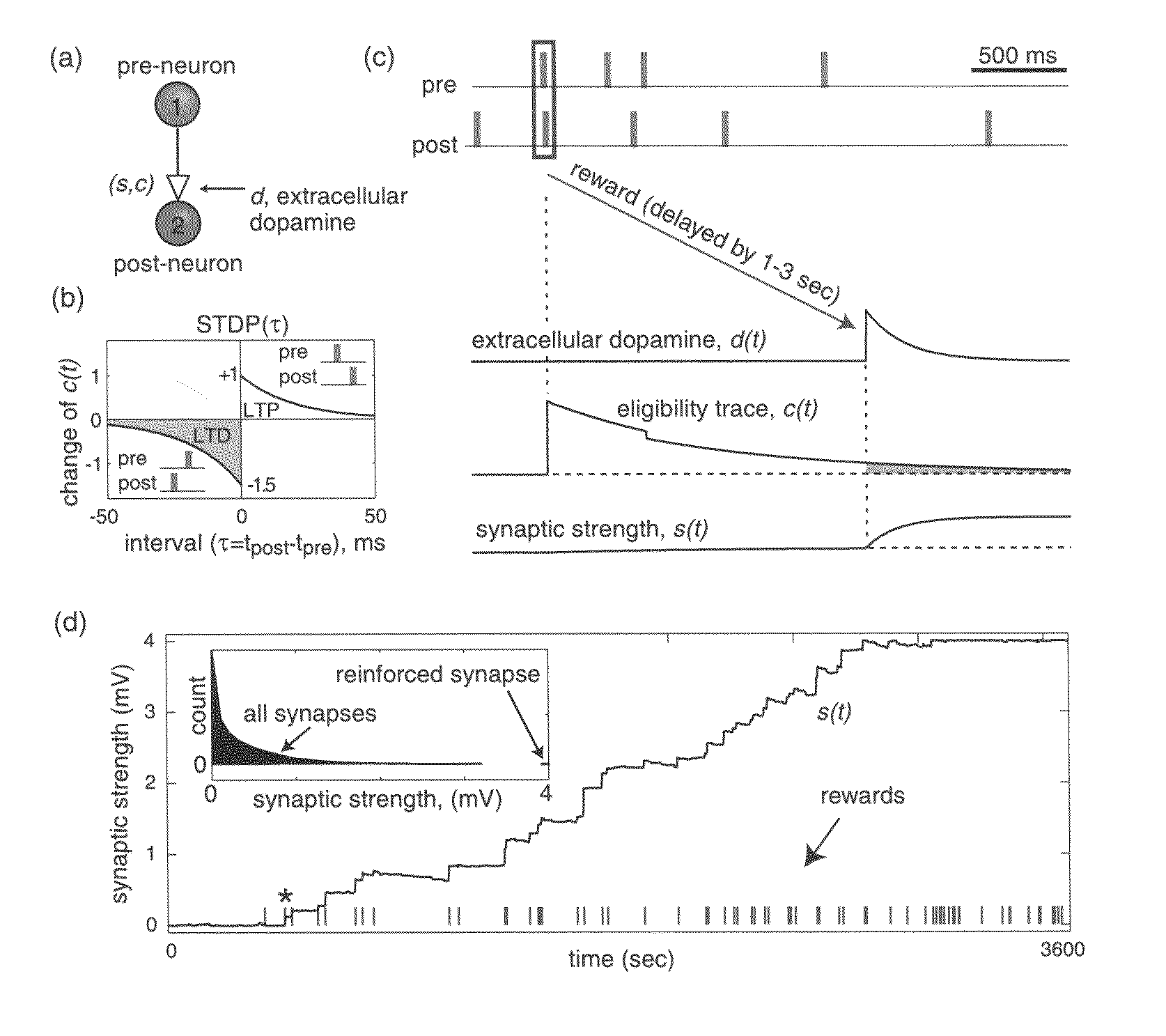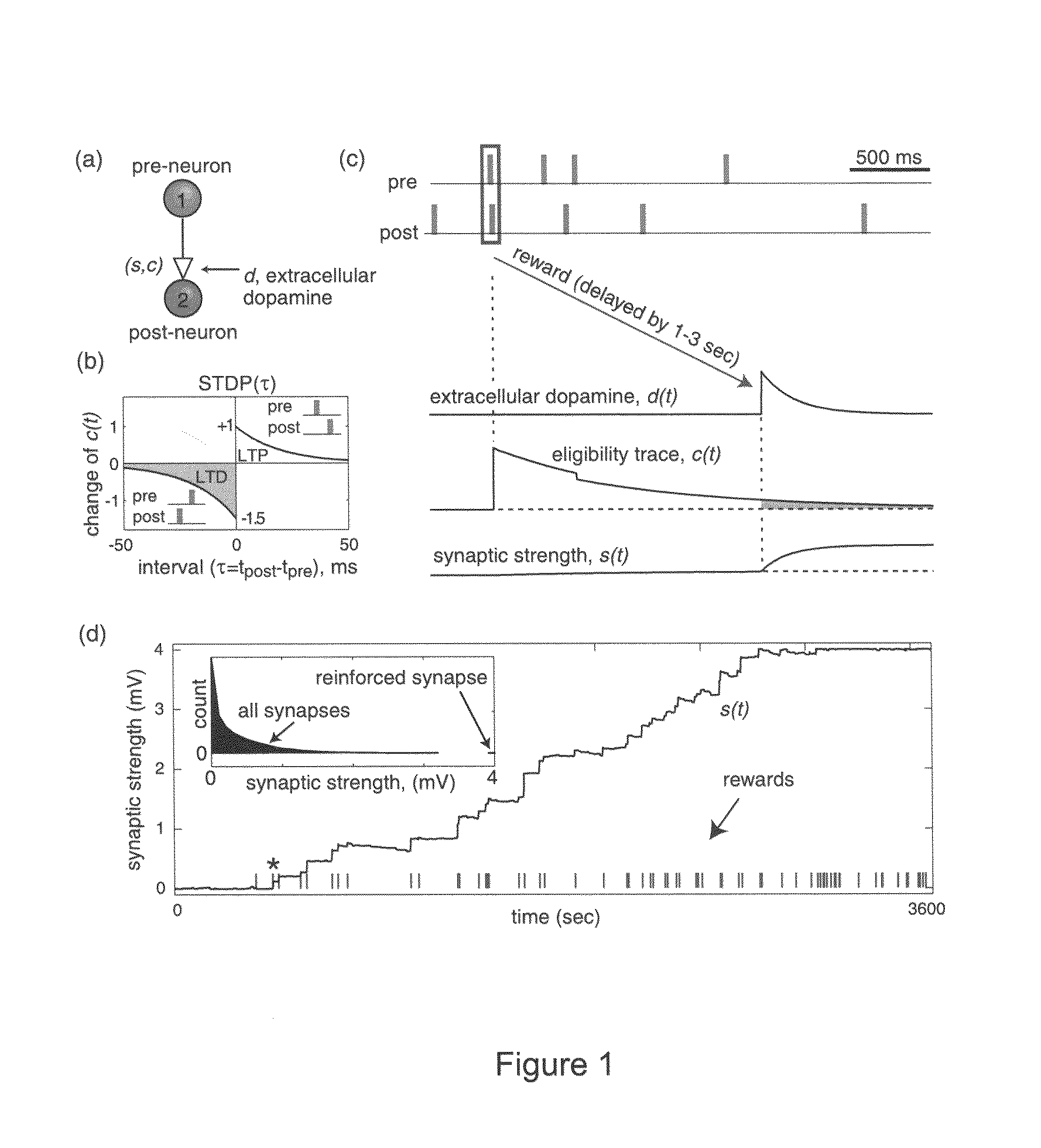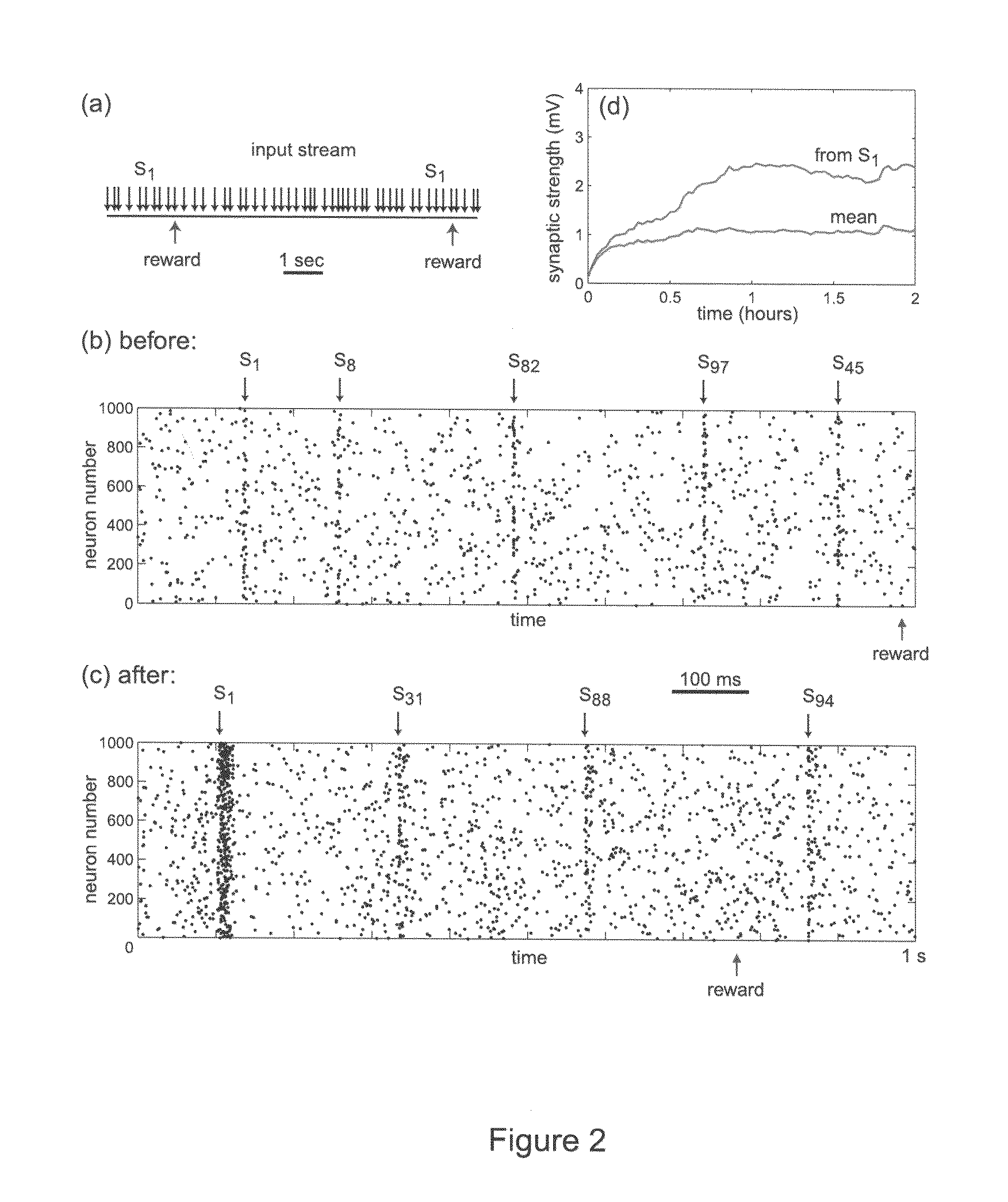Solving the distal reward problem through linkage of STDP and dopamine signaling
a dopamine signaling and distal reward technology, applied in the field of brain dynamics, can solve problems such as failure of mean firing rate models, network insensitive to ongoing activity,
- Summary
- Abstract
- Description
- Claims
- Application Information
AI Technical Summary
Benefits of technology
Problems solved by technology
Method used
Image
Examples
Embodiment Construction
I. Materials and Methods
[0035]Details of the kinetics of the intracellular processes of the brain triggered by STDP and DA are unknown; therefore, in the present application the simplest phenomenological model that captures the essence of DA modulation of STDP is described. This is illustrated and to be described in relation to FIGS. 1(a)-FIG. 1(d).
[0036]With respect to FIG. 1(a), the dynamics of a synapse between the pre-neuron and a post-neuron are described by two phenomenological variables governed by Eqs. (1) and (2) set forth below: synapse strength s and eligibility trace c. The latter is gated by extracellular dopamine (DA) d as shown graphically in FIG. 1(c). Firings of the pre- and post-synaptic neurons shown in FIG. 1(a) induce changes to the variable c according to the spike-timing-dependent plasticity (STDP) rule, as shown in FIG. 1(b). These changes in variable c result in modification of the synaptic strength, s, only when extracellular dopamine d is present (d>0) dur...
PUM
 Login to View More
Login to View More Abstract
Description
Claims
Application Information
 Login to View More
Login to View More - R&D
- Intellectual Property
- Life Sciences
- Materials
- Tech Scout
- Unparalleled Data Quality
- Higher Quality Content
- 60% Fewer Hallucinations
Browse by: Latest US Patents, China's latest patents, Technical Efficacy Thesaurus, Application Domain, Technology Topic, Popular Technical Reports.
© 2025 PatSnap. All rights reserved.Legal|Privacy policy|Modern Slavery Act Transparency Statement|Sitemap|About US| Contact US: help@patsnap.com



